Are Humans The Only Animals That Laugh
The poet Ella Wheeler Wilcox one time wrote, "Laugh, and the world laughs with y'all; weep, and y'all weep alone." These words accept never been more truthful. Contempo research indicates that many more species of animals than previously known often express joy. So the next fourth dimension you start giggling, simply think that scores of brute bystanders could be laughing with you. All jokes aside, according to a 2020 study published in the journal Bioacoustics , in that location are around 65 animals that laugh during playful activeness. Until recently, laughing was thought to be a specifically human miracle. Now, nosotros know that laughing is a rare but legitimate behavior amid certain groups of animals. In particular, primates, rodents, birds, and large mammals possess the best sense of humor. On the other paw, amphibians, reptiles, and fish only can't take a joke.
Given this gut-busting revelation, we thought it worthwhile to tickle your funny os by presenting you a list of 10 animals that express joy. We can't hope to cool it with the animal puns, but we'll do our best. Get ready to guffaw and grin, because here are ten animals that know how to express joy.
#10: Kea Parrot
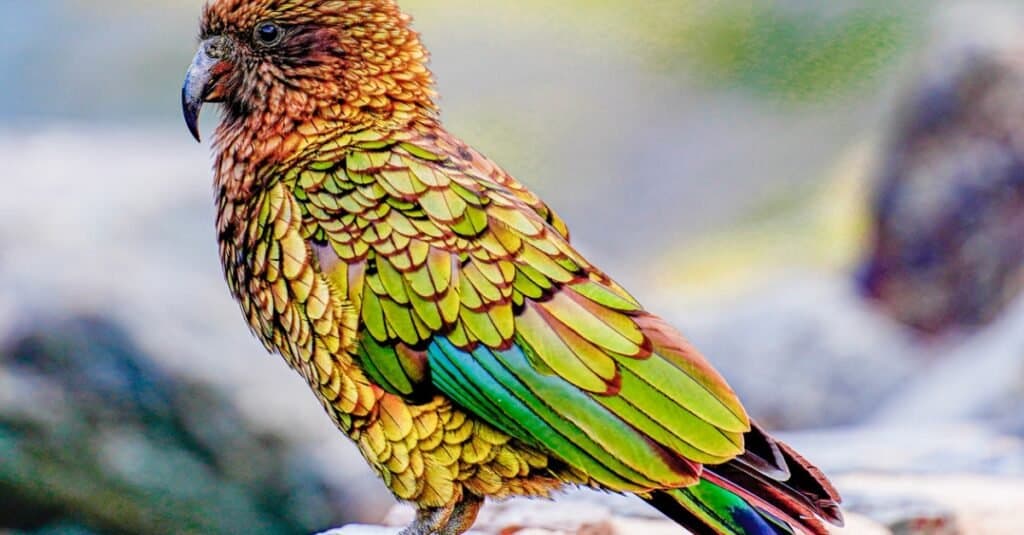
The kea is a large parrot species from the Southward Island of New Zealand. Known equally highly intelligent and curious birds, and frequently engage in playful behavior. They love to perform aerial acrobatics and chase i another. At times, they will even toss objects to each other or play with objects using their beaks and feet. Keas will emit a warbling sound when happy, particularly while playing with other members of their species. That said, kea sometimes makes this audio alone, indicating that it could be a audio of pleasance At the same time, it'south a fact that laughter is contagious, and this appears to be true among keas. When a kea hears the sound of another kea playing, it volition also spontaneously brainstorm to engage in play behavior. It's almost every bit if that hearing some other kea have fun and laugh makes kea within earshot grab a instance of the giggles.
#9: Dolphin
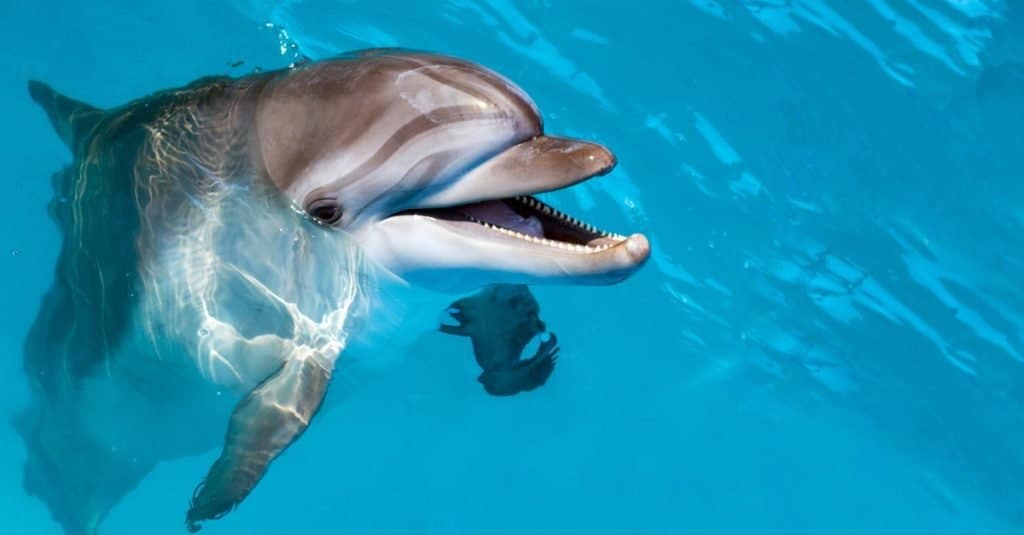
NataSnow/Shutterstock.com
More Neat Content:
Of all the marine mammals, dolphins seem like the only ones who really know how to cut loose and express mirth. During playful situations, dolphins emit a certain sound that they don't normally brand in any other context. This sound, all-time described as several pulses accompanied by a whistle, just occurs when dolphins play fight with one another. Furthermore, dolphins don't brand this sound when they fight aggressively, indicating that the sound has aught to do with fighting. Based on this evidence, scientists adamant that the sound is a vocalism of pleasure. At the very least, the sound is a sign that the dolphin's actions are non-threatening. In a sense, dolphins express joy to let each other know that they're okay. Past laughing, they communicate their intentions and prevent a possible confrontation with another dolphin.
#8: Chimpanzee
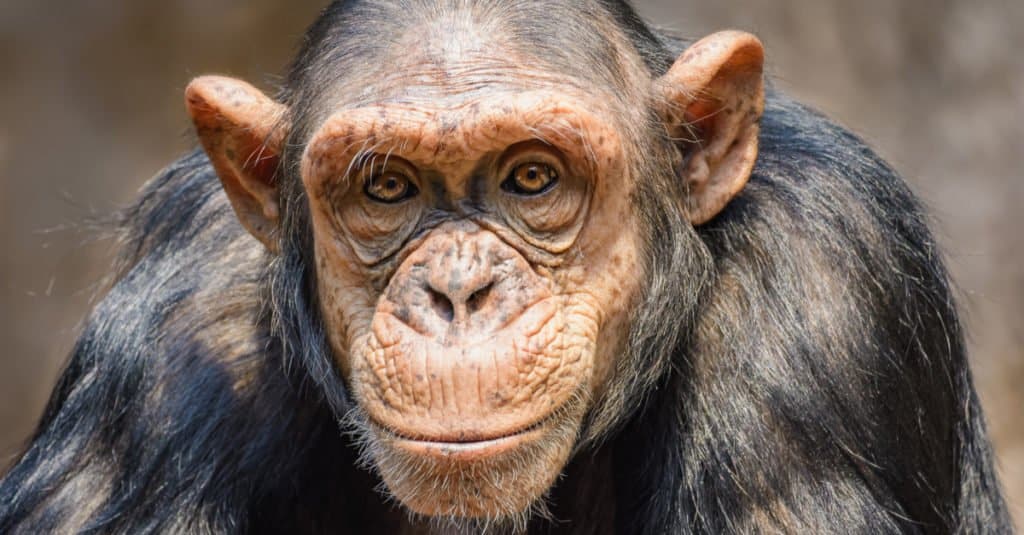
Thorsten Spoerlein/Shutterstock.com
Amongst all animals that express mirth, the phenomenon is most often observed and understood in primates. Along with some species of monkeys, most primates express mirth when playing, roughhousing, or tickling one some other. For instance, both wild and captive chimpanzees laugh when engaging in playful behavior. Unlike a man laugh, chimpanzees typically pant heavily when laughing, alternating with deep inhalations and exhalations. Screeching is another sound that chimpanzees brand when they express mirth, especially when tickled. They may as well vocalize their laughter when surprised by a young man chimp. If ane chimp laughs, another chimp will sometimes laugh in response to another chimp'south laughter. Furthermore, chimps that don't know each other well laugh more frequently than well-acquainted chimps. This indicates that chimpanzees use laugher equally a way to ease tense situations and to blow of steam. Through this behavior, chimpanzees use laughter equally a social lubricant to heighten the level of cohesion within a group.
#7: Elephant

paula french/Shutterstock.com
Elephants grade tight-knit herds of related family unit members and possess a dandy level of intelligence. They tin can complete complex tasks, dispense tools, and recognize themselves, people, and other elephants. Therefore, information technology should come as no surprise that elephants also count among the list of animals that express joy. Elephants frequently engage in playful behavior and may jostle or pull a fast one on on one another. In addition, when playing, baby elephants may brand a sound that sounds like to a human giggle. Another common vox that elephants make when happy is trumpeting with their trunks. All this evidence helps to reinforce the notion that elephants can laugh. Plus, since an elephant "never forgets," there's a high probability that they e'er call up the best knock-knock jokes.
#6: Australian Magpie
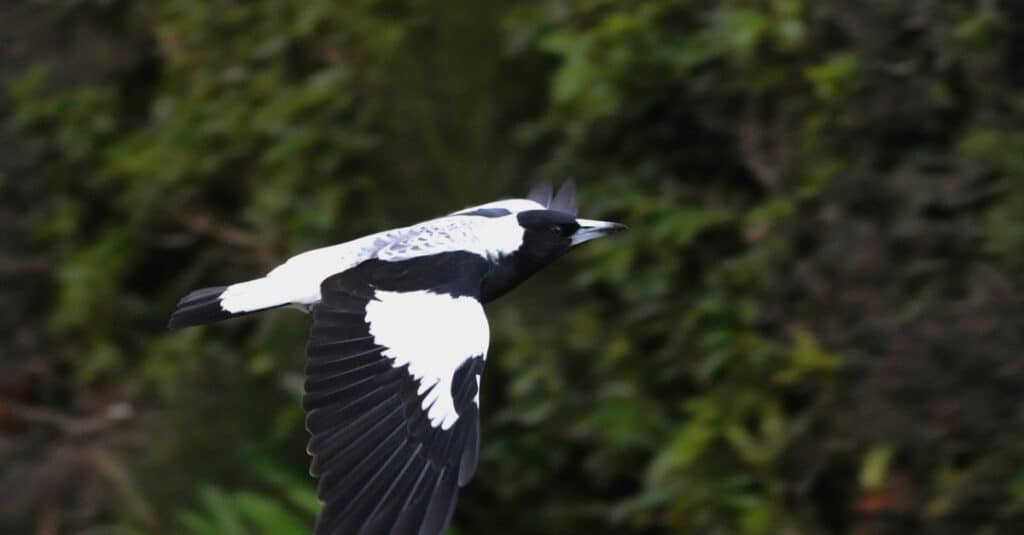
The Australian magpie is a medium-sized black and white songbird from Australia and New Republic of guinea. It is widely considered ane of the most talented songbirds in its region, as it tin can create a wide diverseness of intricate sounds. In add-on to mimicking human voice communication, information technology also laughs during play. To be precise, Australian magpies speak to each other while playing, and simply make these sounds when engaged in play. Given that they can make a vast array of vocalizations, this may simply be a coincidence, but it certainly seems to bespeak that they can laugh. At the very to the lowest degree, Australian magpies savour talking well-nigh how much fun they're having, which makes sense given how much they like the sound of their own voice.
#5: Rat

Few animals in human history accept been observed, analyzing, and dissected equally much every bit rats. Due to their frequency every bit "lab rats," scientists get plenty of opportunities to watch rat responses to certain stimuli. Information technology comes as no surprise that scientists discovered rats emit a long, ultrasonic chirping audio when engaging in rough play or when amused. This sound is likened to a laugh, and rats that express joy the virtually prefer to spend fourth dimension with other rats that laugh. In improver to laughing when playing or being tickled, rats also chirp earlier receiving narcotic substances or during intercourse. As a result, about scientists consider the behavior as a response to positive experiences, similar to how children laugh when they have fun.
#4: Bonobo
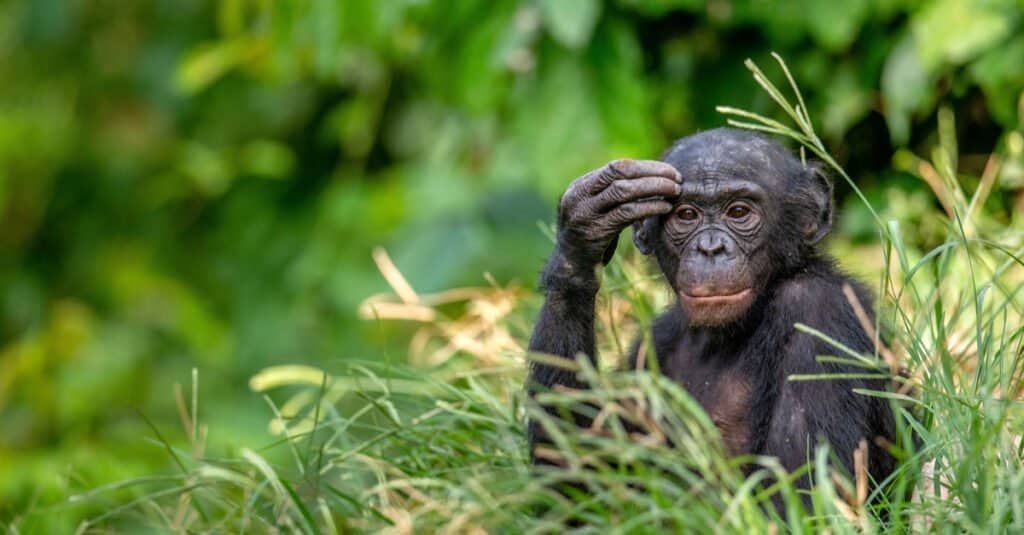
Sergey Uryadnikov/Shutterstock.com
While bonobos oft get lumped in with their swain primate, the chimpanzee, they are a distinct species with their own unique appearance and behaviors. Bonobo societies feature complex social structures, and unlike other primates, bonobos groups contain much less male dominance and more power-sharing amid females. This more egalitarian construction may help explain why bonobos rank among the well-nigh vocal of all primates. They used a wide number of vocalizations, among which is a hoarse, throaty chuckle. Like their young man primates, bonobos laugh when engaging in play and also when amused. According to research, a bonobo'due south laughter follows the same design as the laughter of a human baby and includes similar facial expressions. Even into sexual maturity, they retain a playful nature and will laugh and cooperate with even unfamiliar bonobos in sure situations.
#3: Dog

Michal Ninger/Shutterstock.com
At some point or other, every dog owner has told their pup a joke to try and get it to express joy. While this may seem silly, it'due south not completely basics, every bit dogs possess the ability to laugh. When dogs laugh, they pant in a rhythmic pattern fabricated upwards of a burst of varying frequencies. In some cases, these pants tin can fifty-fifty sound like homo laughter. Scientists discover that playing these panting sounds to other dogs initiates spontaneous play, increases social behavior, and reduces stress. In addition to laughing, dogs will besides wag their tail when happy, and some volition put on a "happy face" that looks an awful lot like a human smile. So the side by side time your dog is in a bad mood, endeavor telling it a joke and see if you get a pant, smile, or a big lick on the face for your effort.
#2: Gorilla
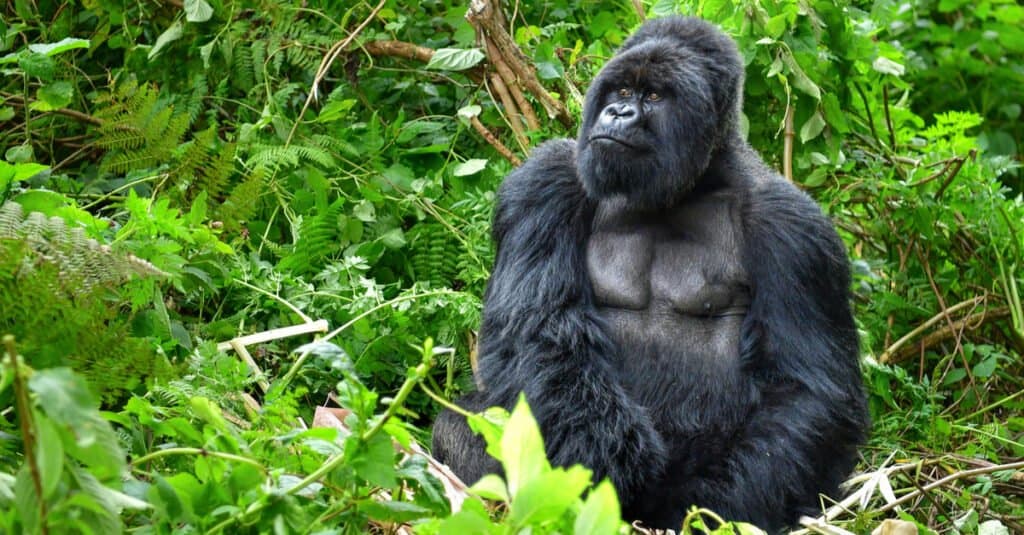
Onyx9/Shutterstock.com
In add-on to its status as the largest and strongest ape, the gorilla may as well earn the title of the all-time comedian. While evidence indicates that gorillas laugh when playing or amused, at that place also exists enough of examples involving gorillas telling complex jokes. For example, Koko, a famous gorilla who learned more than one,000 signs, frequently used signs to tell jokes with her instructor and caretaker, Francine Patterson. At its root, humor and comedy are forms of symbolic play, with words and actions used to allude to certain emotions and experiences. Given this, it stands to reason that gorillas could learn to tell jokes using sign linguistic communication. In one joke, Koko answered the question, "What can you call back of that is hard?" with the sign for "work." In yet some other instance, she tied a trainer's shoelaces together and then signed that the trainer should "chase her."
#1: Degu
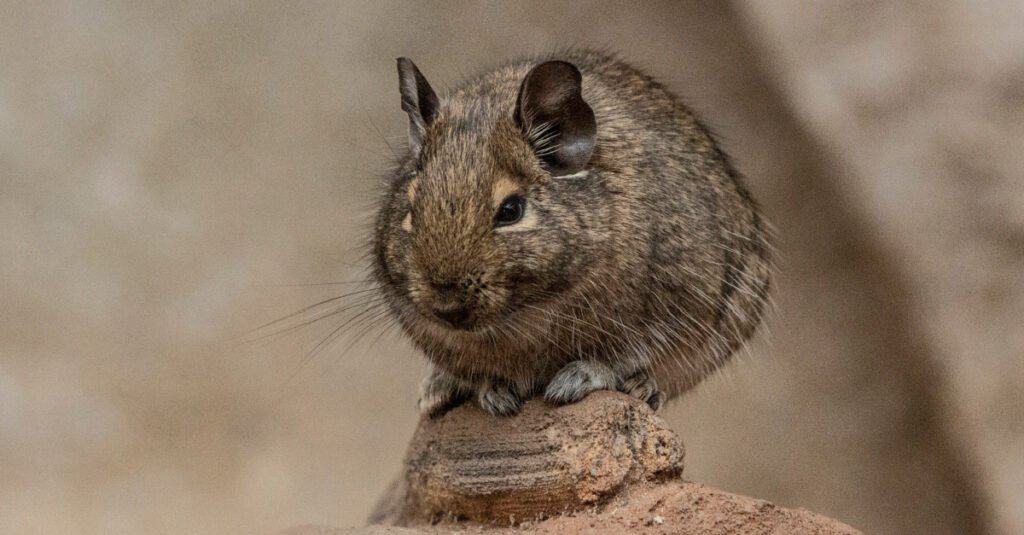
The degu is a modest rodent like to a chinchilla or guinea pig that is native to sure neotropical regions of Republic of chile. Extremely social creatures, degus live in intricate burrows containing multiple members and use a wide number of vocalizations. In total, they can make up to fifteen dissimilar sounds and can distinguish individual degu voices. Given their advanced communication skills, it'south no wonder that degus belong to the minor number of animals that laugh. When laughing, degus more often than not emit a high-pitched purr or grumble, and do so either during play or when content. To top it all off, degus occasionally "chuckle" in their sleep. While no clear reason exists for this beliefs, nosotros like to remember it'southward because degus similar to practice their comedy routines in their dreams.
Source: https://a-z-animals.com/blog/10-animals-that-laugh/
Posted by: boydurnow1985.blogspot.com

0 Response to "Are Humans The Only Animals That Laugh"
Post a Comment